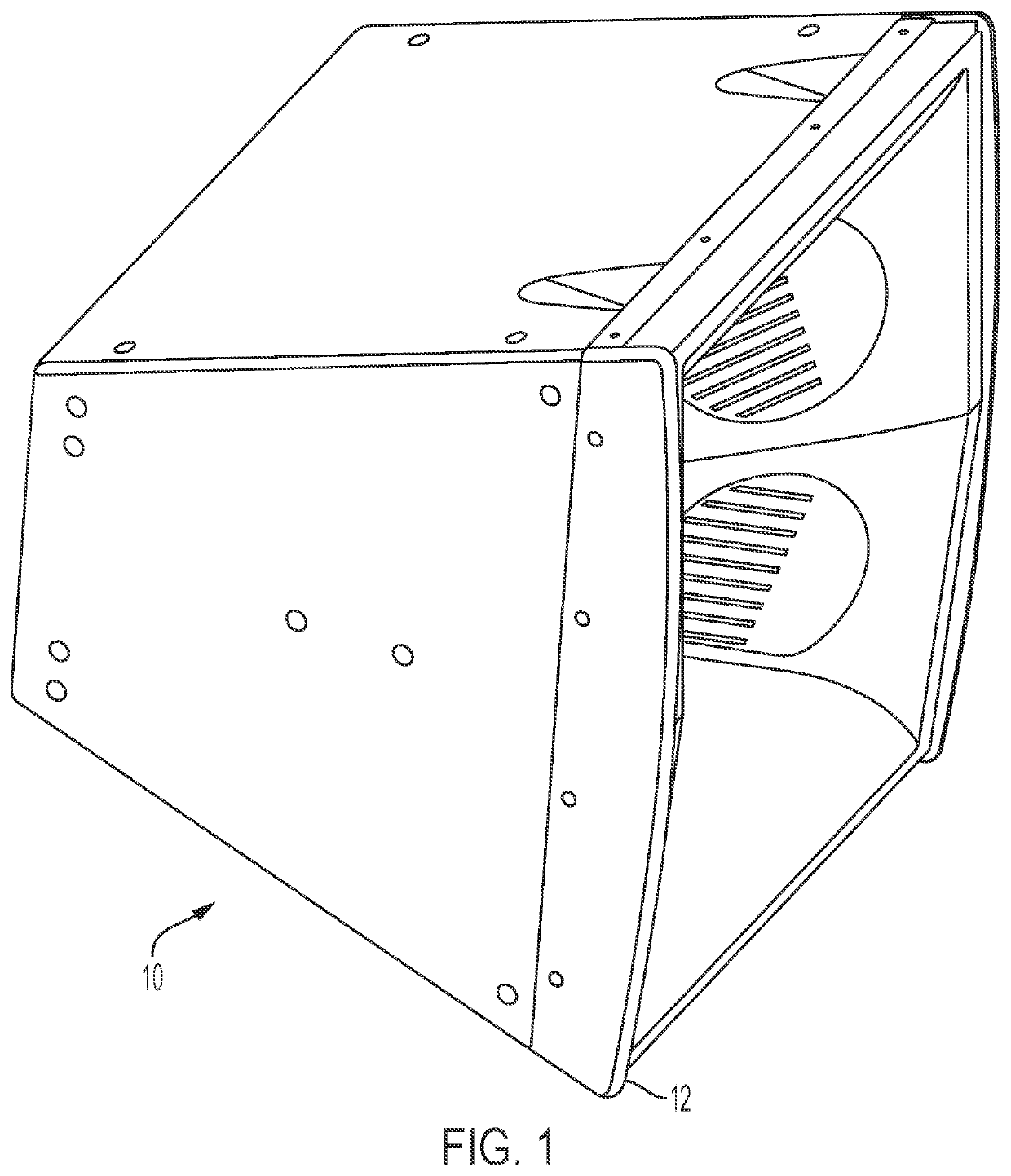Method of depressurizing cross radiation using an acoustically resistive leak path
a cross-radiation, acoustically resistive technology, applied in the field of loudspeakers, can solve the problems of contaminating directivity behavior, negatively altering the summation, and creating interference distortion, so as to reduce the mf energy and minimize the energy of the return path
- Summary
- Abstract
- Description
- Claims
- Application Information
AI Technical Summary
Benefits of technology
Problems solved by technology
Method used
Image
Examples
Embodiment Construction
[0028]The present invention will be described in connection with a three-way horn loudspeaker 10 as illustrated in FIG. 1. The present invention may be used in connection with other combinations but, as will be recognized by one skilled in the art, the horn 10 preferably includes a MF and HF transducers.
[0029]Referring now to FIG. 2, the horn loudspeaker 10 of FIG. 1 is illustrated without the outer enclosure 12. For the purposes of this disclosure, the horn 10 is a three-way loudspeaker including high frequency (HF) transducers 20, mid-frequency (MF) transducers 30, and low frequency (LF) transducers 40. As mentioned previously, the choice of multiple sized transducers is well known in the art and relates to optimizing radiation efficiency and performance criteria such as linearity, transient behavior, low distortion, etc.
[0030]The present invention is constrained by the design obstacles delineated previously. In producing a loudspeaker to overcome these design obstacles, several k...
PUM
 Login to View More
Login to View More Abstract
Description
Claims
Application Information
 Login to View More
Login to View More - R&D
- Intellectual Property
- Life Sciences
- Materials
- Tech Scout
- Unparalleled Data Quality
- Higher Quality Content
- 60% Fewer Hallucinations
Browse by: Latest US Patents, China's latest patents, Technical Efficacy Thesaurus, Application Domain, Technology Topic, Popular Technical Reports.
© 2025 PatSnap. All rights reserved.Legal|Privacy policy|Modern Slavery Act Transparency Statement|Sitemap|About US| Contact US: help@patsnap.com



